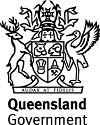Published Wednesday, 11 August, 2021 at 12:21 PM

Minister for Resources
The Honourable Scott Stewart
Native plants used to extract rare earth metals as part of trailblazing Queensland research
Plants you can find in your own backyard could unlock future Queensland jobs in the new minerals.
The Palaszczuk Government has invested $1 million into a joint study with the University of Queensland’s Sustainable Minerals Institute.
Through the study, native plants like selenium weed and a variety of macadamia tree are being researched for their abilities as “hyperaccumulators” that extract rare earth metals from the ground through a process called “phytomining”.
Speaking from the Sustainable Minerals Institute, Resources Minister Scott Stewart said the innovative world-first joint study has the potential to change how some mines operate in the future.
“In a commercial environment, this could mean plants could be used to extract minerals and that means less of a need to disrupt the ground,” Mr Stewart said.
“Or they could be used to extract minerals from tailings during mine rehabilitation which can then be sold.
“The popularity of renewable technology and electric vehicles continues to grow.
“We already know Queensland has rich deposits of minerals like cobalt, copper and vanadium.
“We want to look at new ways we can use those minerals to create even more jobs as we continue to deliver our COVID-19 Economic Recovery Plan.”
Researchers have found a field of one type of hyperaccumulators planted across a nickel-rich site like a mine tailings dam could yield 300kg of nickel per hectare every year, meaning the important metal used in rechargeable batteries and stainless-steel manufacturing could be harvested, rather than mined.
The study will involve determining whether certain types of native plants found at rare earth element rich sites in Queensland can draw those metals out of the soil in high volumes.
University of Queensland Professor Rick Valenta said if successful, the phytomining study could supply sustainably sourced rare earth metals with low environmental impact.
“The study aims to produce hybrid processing techniques to extract rare earth elements and to unlock a variety of resources typically not considered for rare earth element production,” Professor Valenta said.
Mr Stewart said this would be looked upon favourably around the world, enhancing Queensland’s position in the market.
“Consumers in Europe or the United States want to know that the materials used to make the battery that powers their electric cars were sourced ethically, in both a social and environmental sense,” said Mr Stewart.
“That’s why we continue to engage with European markets and showcase the potential of Queensland’s minerals industry.
“Phytomining could provide Queensland a unique advantage in this space.”
Director of UQ’s Centre for Mined Land Rehabilitation Associate Professor Peter Erskine said phytomining could be used to access unconventional resources that are not viable using existing mineral processing techniques.
“This includes mine wastes, such as tailings, that still hold residual metals of interest - in effect, phytomining could turn waste into new resources,” Dr Erskine said.
The specialised study will run for four and a half years and includes tests on rare earth element-rich material from the Phosphate Hill mine and closed Mary Kathleen mine near Cloncurry, and the Peak Range in Central Queensland, among others.
A series of experiments will follow to establish optimum conditions, range of application and limitations for the identified plant species and different rare earth-rich material types.
The study is a major part of the Palaszczuk Government’s $23 million New Economy Minerals Initiative.
ENDS
Media contact: Bryce Heaton 0434 575 237

